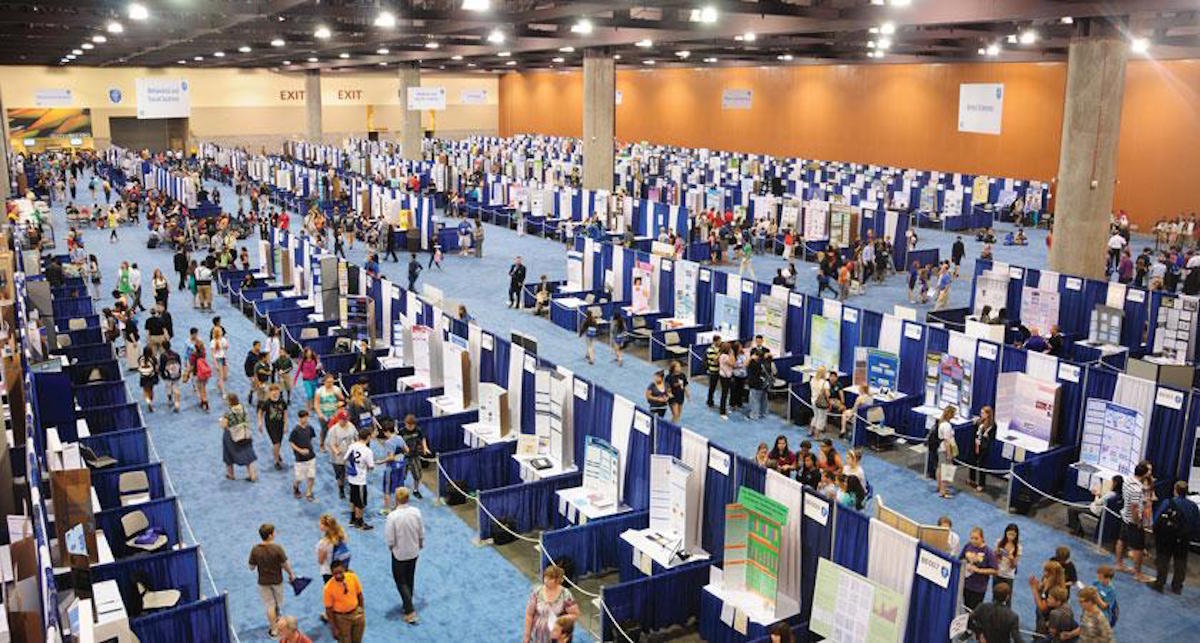
Calling all young scientists to the world’s largest high school science fair
This week Pittsburgh proudly hosts the Intel International Science and Engineering Fair (ISEF), the world’s largest high school science research competition. A program of the Society for Science & the Public (SSP), more than 1700 future scientists and entrepreneurs will gather at the David L. Lawrence Convention Center to share research, inventions and ideas while competing for more than $4 million in awards.
The fair runs from May 10 to May 15 and Thursday May 14 is a Public Day where middle and high students from the Pittsburgh area can chat with finalists and participate in hands-on, interactive activities celebrating science.
“Today’s young people are the future global economy and the skills developed through exploring science, technology, engineering and math are essential for developing the solutions to issues around the world,” says Wendy Hawkins, executive director of the Intel Foundation. “For Intel, fostering a curiosity for innovation and rewarding those young people for their critical thinking skills is how we ensure success on a global scale.”
Participating students from nearly 80 different countries began their scientific quests humbly–progressing from community-based science fairs to regional and state competitions and finally winning the opportunity to attend Intel ISEF. And with doctoral-level scientists from across the globe reviewing and judging their work, these students have the chance to shine on an international stage.
A quick browse through the Fair’s program reveals that, though young, these students are thinking big. Crafting solutions for some of the most world’s most pressing issues–renewable energy sources, web security, cancer treatment, global warming–these projects have the potential to solve problems that have stumped scientists for years.
“This Fair provides a platform for honing the skills that will eventually enable these students to make their mark on the world,” says Hawkins. “Intel—and the tech industry as a whole—benefits by getting to know these young people early in their careers and by providing welcoming arenas for their talents.”
SSP partners with Intel—along with dozens of other corporate, academic, government and science-focused sponsors—who provide the support and awards for Intel ISEF. The judges will select 20 winners in each category and prizes amount to $75,000 and $50,000 each to the top three students. Students will also participate in hands-on, in-person collaboration with peers, experts and industry professionals.
Maya Amiera, president and CEO of SSP, says this will mark the third time the fair is being held in Pittsburgh since the event’s inception in 1950. “Pittsburgh was selected as one of the three cities to serve as a home for Intel International Science and Engineering Fair because of its strong connection to science and math research, an active higher education presence in the area, ample local scientists that can serve as judges, an active community of local volunteers, reasonable financial costs and geographical accessibility.”
Featured photo: Intel International Science and Engineering Fair exhibit hall, Photo courtesy of Society for Science & the Public